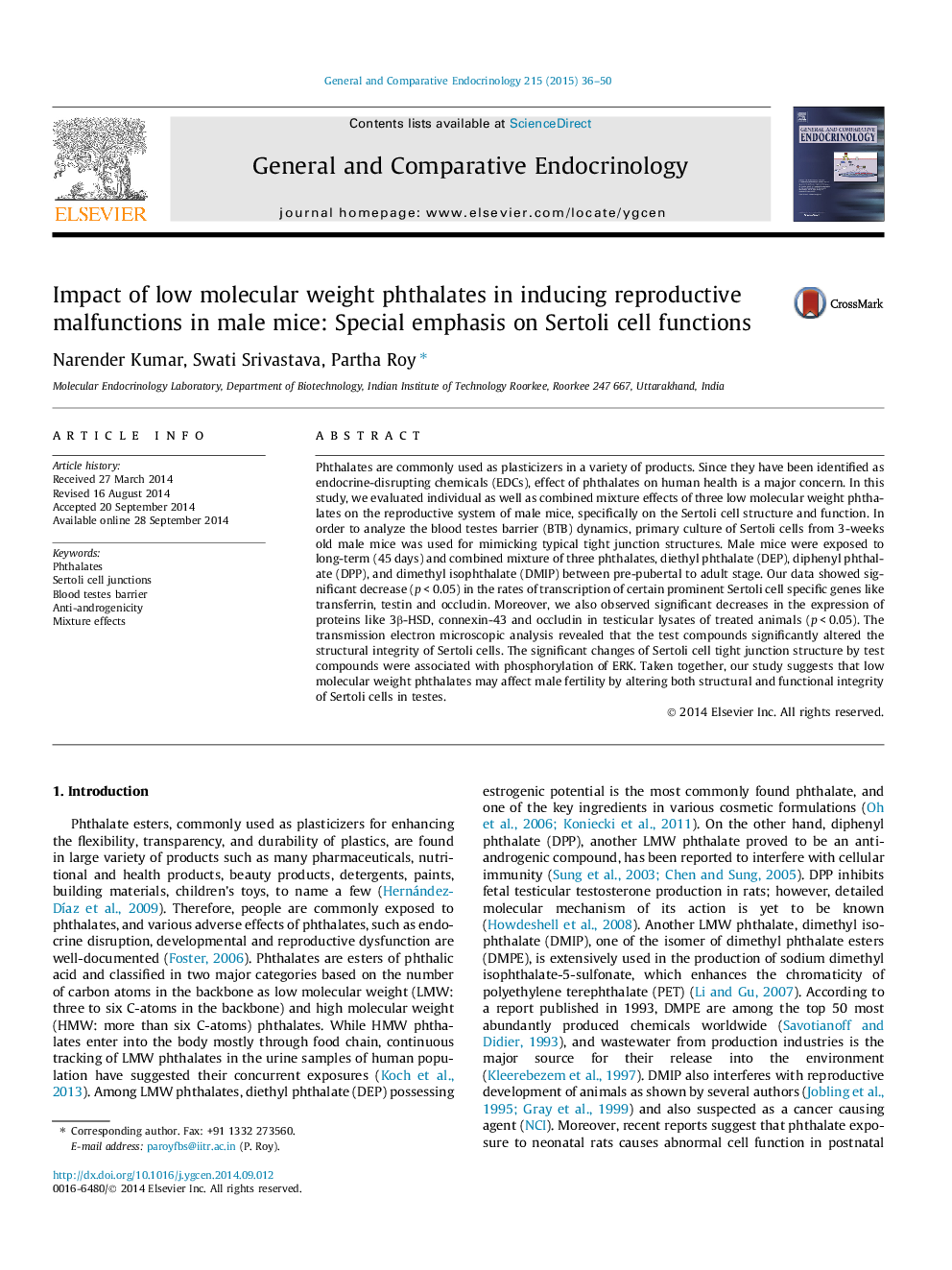| Article ID | Journal | Published Year | Pages | File Type |
|---|---|---|---|---|
| 2800017 | General and Comparative Endocrinology | 2015 | 15 Pages |
•Low molecular weight phthalates (LMW) are potential male reproductive toxicants.•LMW phthalates alter structure and functions of tight junction proteins in Sertoli cells.•In vivo and in vitro data suggested involvement of MAPK pathway through ERK.
Phthalates are commonly used as plasticizers in a variety of products. Since they have been identified as endocrine-disrupting chemicals (EDCs), effect of phthalates on human health is a major concern. In this study, we evaluated individual as well as combined mixture effects of three low molecular weight phthalates on the reproductive system of male mice, specifically on the Sertoli cell structure and function. In order to analyze the blood testes barrier (BTB) dynamics, primary culture of Sertoli cells from 3-weeks old male mice was used for mimicking typical tight junction structures. Male mice were exposed to long-term (45 days) and combined mixture of three phthalates, diethyl phthalate (DEP), diphenyl phthalate (DPP), and dimethyl isophthalate (DMIP) between pre-pubertal to adult stage. Our data showed significant decrease (p < 0.05) in the rates of transcription of certain prominent Sertoli cell specific genes like transferrin, testin and occludin. Moreover, we also observed significant decreases in the expression of proteins like 3β-HSD, connexin-43 and occludin in testicular lysates of treated animals (p < 0.05). The transmission electron microscopic analysis revealed that the test compounds significantly altered the structural integrity of Sertoli cells. The significant changes of Sertoli cell tight junction structure by test compounds were associated with phosphorylation of ERK. Taken together, our study suggests that low molecular weight phthalates may affect male fertility by altering both structural and functional integrity of Sertoli cells in testes.
